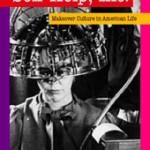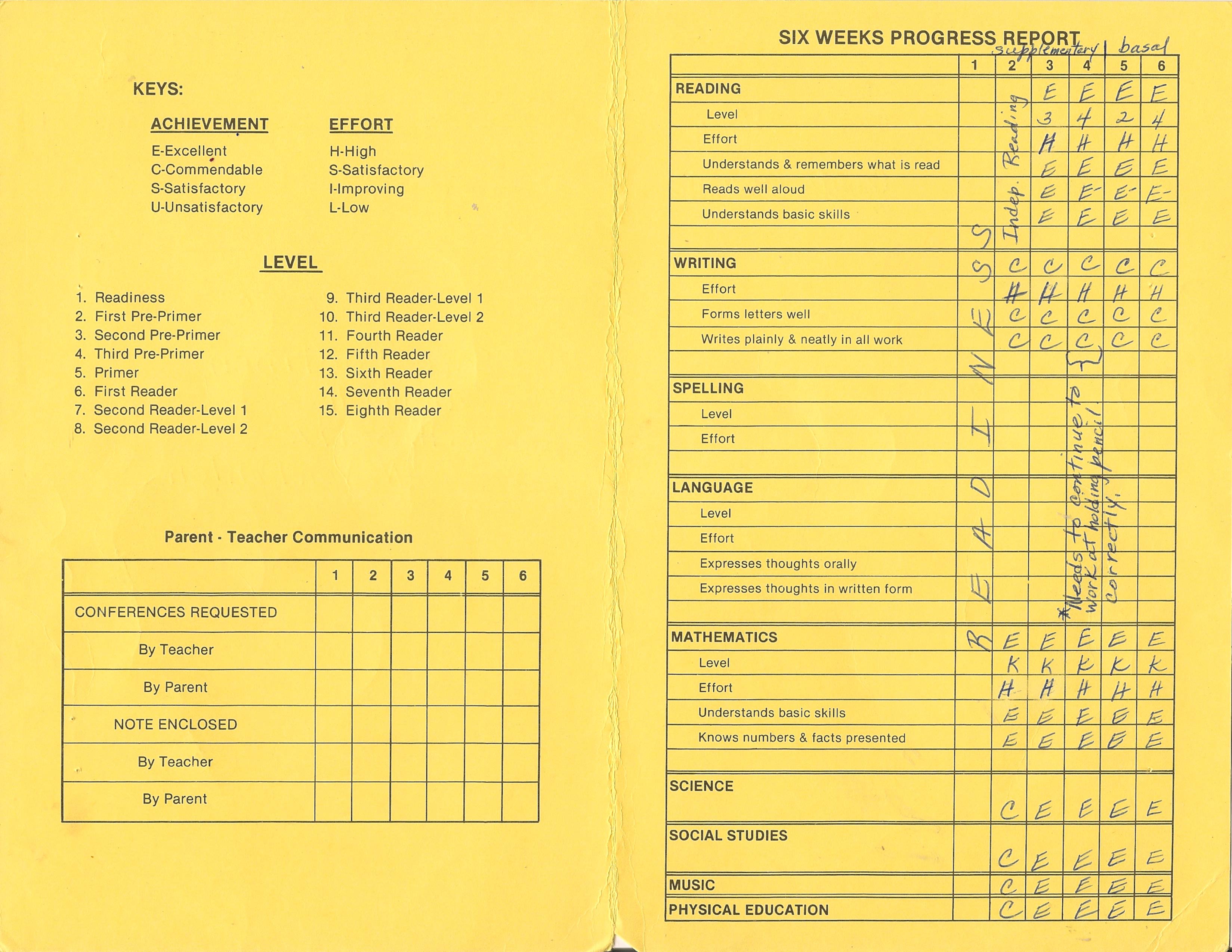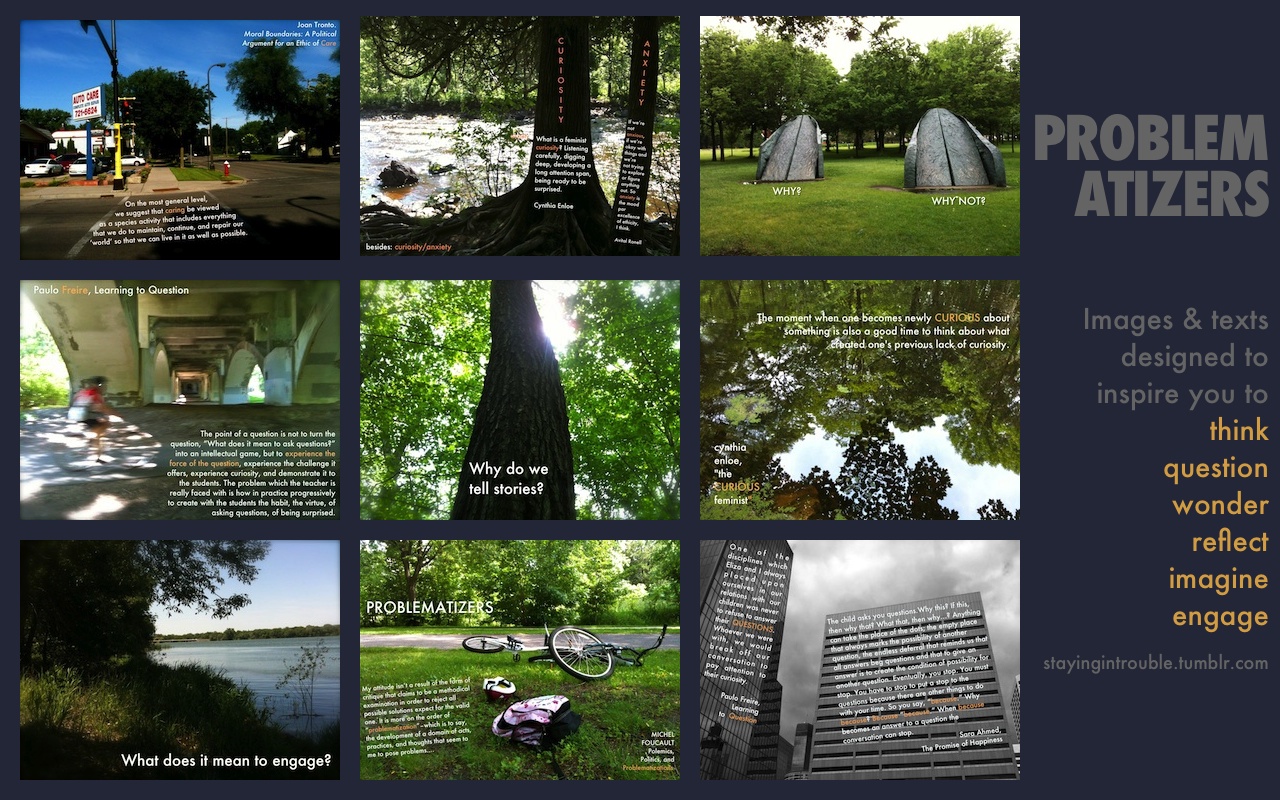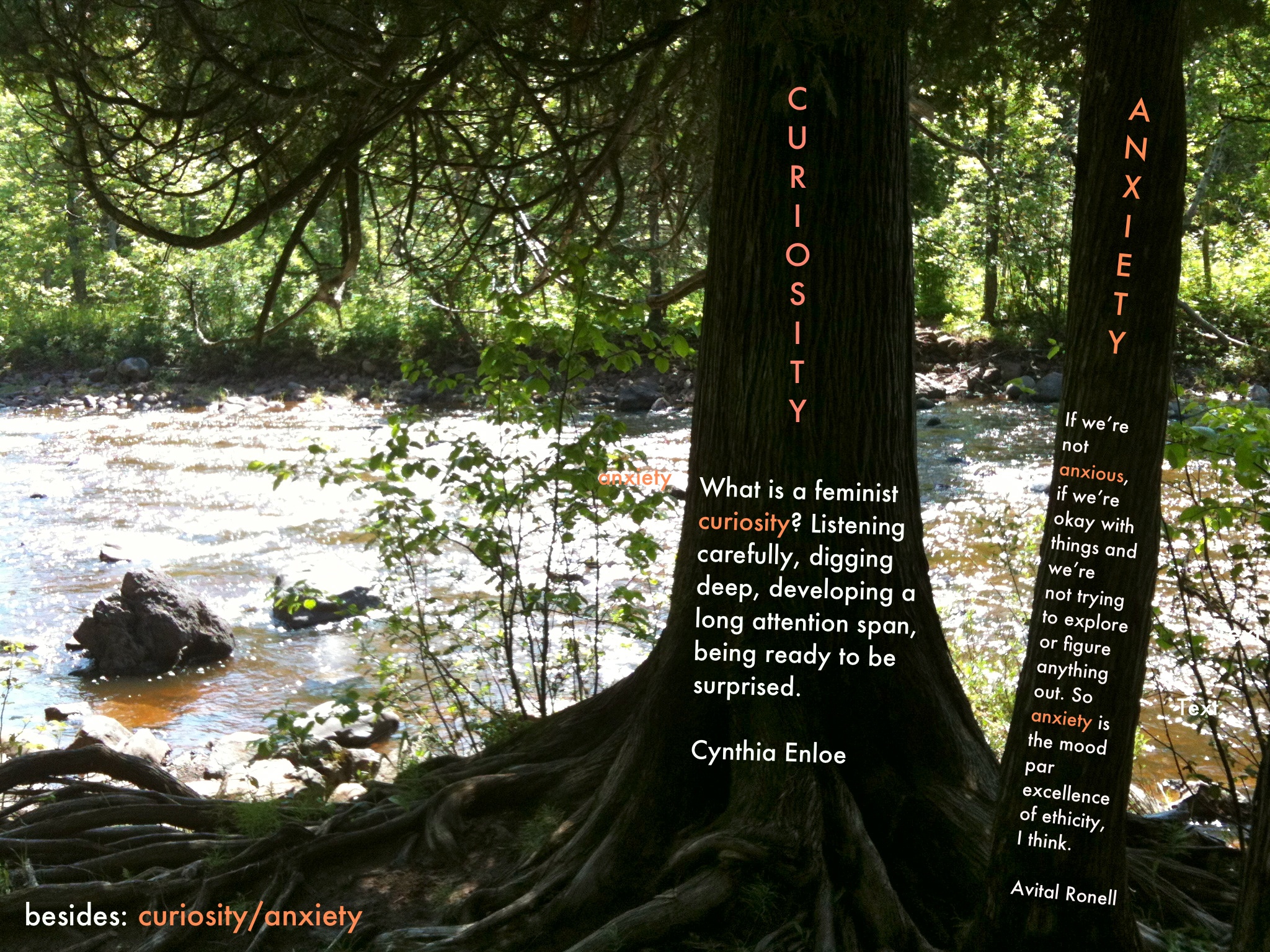 Today, on this beautiful Tuesday afternoon in June, the final day of school for the kids, I’m finishing up my four part series on how I’m using social media to make trouble (here are parts one, two and three). It seems fitting to end with Vimeo today; I just uploaded a digital video on my one year anniversary of running yesterday.
Today, on this beautiful Tuesday afternoon in June, the final day of school for the kids, I’m finishing up my four part series on how I’m using social media to make trouble (here are parts one, two and three). It seems fitting to end with Vimeo today; I just uploaded a digital video on my one year anniversary of running yesterday.
This running video is the 4th one that I’ve made since mid-March (I’ve also made 2 private, family videos). The others are: Student Progress Report: An Undisciplined Account, Stories from the UP, and TROUBLE: an introduction. It’s been a lot of fun experimenting with new techniques and new ways for creatively expressing myself.
In my first video, my goal was to reflect on the concepts of discipline and self-control by closely examining (and being curious about) one of the few artifacts that I still have from when I was a kid: my first-grade report card. As I discuss in the video, I (apparently) lacked self-discipline. In addition to using this video to tell a story about my childhood and explore a troublemaking concept (being un/disciplined), I also use it to continue processing the loss of my mom and experimenting with how to be curious about an object (the progress report).
In my second video, I wanted to trouble the typical vacation narrative by documenting the struggles and difficulties of going on a family vacation along with the joyful experiences and memories of it. Using footage (done by me, STA and our kids, FWA and RJP) from our trip to the Upper Peninsula of Michigan last summer, I dissect (deconstruct?) a few typical parts of a story—the path or goal/purpose/telos, the characters, the place and the action—and focus on narrating the “difficult and ongoing negotiations of 4 different, all strong, personalities living together as a family.” In addition to reflecting on the trouble of trying to enjoy a vacation with 2 young kids, I also try to (at least) hint at my feelings of disconnection from the UP since my parents sold the family farm and my mom died. I think this haunting is most effectively conveyed by the soundtrack (from STA/Room 34).
In my third video, I experiment with how to tell the story of this blog. In addition to my voiceover narrative about the blog and how/when I started it, I also try to tell the story through images of blog titles. I was partly inspired to create this video after STA, somewhat jokingly, told me that I needed to work on my “elevator speech” about the blog. Of course, this video doesn’t really work as an elevator speech or a 30 second commercial, but I hope it’s still helpful in introducing visitors to my blog, my research and writing, and my life-as-a-troublestayer.
Working on the video, enabled me to further articulate my current state of being troubled by the academy. In one section, I say:
In experimenting on this blog, I’ve not only reflected on the value of trouble, but I’ve managed to get myself into trouble; I’ve come up against the limits of academic spaces and institutions. When I started my blog, I imagined it would allow me to experiment with connecting my academic self to my experiences and practices outside of the academy. And, in some ways, it has. But, it has also forced me to confront the problems with the academy. And I’ve become troubled by how academic work seems to more often come at the expense of my meaningful engagement with ideas and with others. So, instead of enhancing or complementing my academic work, this blog has made me question its very purpose. Is that a bad thing? I don’t think so, but it certainly causes trouble for me and my ability/willingness to function within academic spaces.
In my fourth and most recent video, I decided to celebrate my first anniversary of running by documenting “my process of loving and living (mostly joyfully, sometimes painfully, but always intensely) through running.” While I hope others will watch and appreciate the video, my main purpose in creating it was to record my feelings about and experiences of running a 5k, 3 times a week (usually) around Lake Nokomis in South Minneapolis for my present and future self. I want to have a record of what I’ve been thinking and seeing as I run.
This video fits as a troubling video for a couple of reasons. First, the second half of the video focuses on grieving for my mom and my troubled relationship to exerciste/being healthy after she died. Second, in making the video as a (mostly) joyful story about running, I challenged/troubled my own impulse, fostered by years and years of academic training, to critically unpack and theorize about why I hadn’t exercised for so many years. In early drafts of my voiceover, I devoted a lot more time to connecting my lack of exercise with feminist theories and critiques of the mind/body split in the academy. I had a breakthrough when I decided to take all of that out and simply write:
What happened to that younger me? I could speculate on all of the reasons how and why I lost my powerful physical confidence, drawing upon personal experiences and academic feminist theories. But not now. Why spend time dwelling on that past, when I could reflect on my joyful present?
Here’s a second paragraph that I cut out of the final script; it further articulates how my choice to take out the most explicit theorizing signals a shift from critical to creative:
Instead of looking back on why I lost it, I’m much more interested in celebrating my reclaiming of it. This desire to not look back signals a shift away from a critical self who tirelessly analyzes and assesses reasons and towards a creative self who, while not uncritically ignoring causes or “oppressive structures” (to use my feminist-speak), joyfully experiments with new ways of being (or maybe old ways, once lost).
In each of these videos, I’ve experimented with learning new techniques and new ways of inserting myself into the stories. I think I’m most present in the fourth video; not only do I have voice-over and images, but lots of moving footage of me running. It was great to work with STA on capturing this footage at Lake Nokomis (on a beautiful Friday evening). At some point, I might want to further reflect on the history (starting with my farm films from 2002 and 2003) of my experiments with self-representaiton in my videos. Ha! I’ll just have to add that to the queue of projects.
As I look over these four videos as a whole, I’m struck by one common theme. They all represent a desire to move beyond (or, at least outside of or beside) my recent past of grieving a dying/dead mom and struggling to fit in and survive in the academic industrial complex.
In Student Progress Report: An Undisciplined Account I say:
While I could dwell on the damage that that need to calm down and conform did to me, I don’t want to. Instead, I want to take a minute to celebrate the 7 year old self that was full of life and passion and curiosity and wonder and managed, in spite of much adversity and resistance, to hang onto it for 30+ years. I started making trouble at an early age (mostly the good kind!) and I’ve stayed in it for all this time. I think that’s pretty cool.
In TROUBLE: an introduction I say:
Now, 3 years into writing in this blog and over 2.5 years past my mom’s death, I’m still very interested in critique and questioning, discomfort, and grief but I’m more invested in what’s beside these things: being creative, joyful, full of wonder and living, not grieving. I think that this wondering, curious and playful spirit is a key part of virtuous and effective troublemaking; it’s a needed complement to the demanding rigors of always questioning and never accepting ideas or rules or norms.
And, as I mentioned above, in RUN, I say:
What happened to that younger me? I could speculate on all of the reasons how and why I lost my powerful physical confidence, drawing upon personal experiences and academic feminist theories. But not now. Why spend time dwelling on that past, when I could reflect on my joyful present?
In creating these videos, I didn’t set out to document these shifts. Instead, it was through the process of working on these videos that I fully realized that that shift was necessary. I love that about experiment with digital storytelling; creating new products is rewarding, but the real value comes through the process of reflecting, thinking through and paying a lot of attention to the images, stories, and experiences of my life.
Some Other Important Links
Experimenting with Digital Storytelling, Part One and Part Two
 Currently I’m (very slowly) reading Micki McGee’s Self-Help, inc. While I am a little disappointed by the lack of serious attention to race in relation to labor and being belabored, I find her book to be a useful introduction to the rise of self-help culture in post Industrial U.S. It’s fascinating to read the larger history of books that I used to see as kid on my dad’s bookshelves (or that he told me about in our many conversations); books like Robert Schuller’s Tough Times Never Last, But Tough People Do. Schuller was a favorite of my dad’s. I remember him watching Schuller’s Hour of Power, direct from the Crystal Cathedral in California. Ah, the memories!
Currently I’m (very slowly) reading Micki McGee’s Self-Help, inc. While I am a little disappointed by the lack of serious attention to race in relation to labor and being belabored, I find her book to be a useful introduction to the rise of self-help culture in post Industrial U.S. It’s fascinating to read the larger history of books that I used to see as kid on my dad’s bookshelves (or that he told me about in our many conversations); books like Robert Schuller’s Tough Times Never Last, But Tough People Do. Schuller was a favorite of my dad’s. I remember him watching Schuller’s Hour of Power, direct from the Crystal Cathedral in California. Ah, the memories! In the chapter I’m reading right now, McGee is tracing the differences between Stephen Covey and Tony Robbins. While they have contrasting relationships to religion, ethics, values, both Covey and Robbins use them for achieving success in business. Robbins draws upon the tradition of televangelists, developing a system that focuses on personality and mind-power. Covey looks to Ben Franklin (his
In the chapter I’m reading right now, McGee is tracing the differences between Stephen Covey and Tony Robbins. While they have contrasting relationships to religion, ethics, values, both Covey and Robbins use them for achieving success in business. Robbins draws upon the tradition of televangelists, developing a system that focuses on personality and mind-power. Covey looks to Ben Franklin (his  company is Franklin Covey after all) to develop a rational system based on improving the quality of one’s character. As I remember it, my dad was definitely more of a fan of the Covey approach. Does he have any Tony Robbins books? I don’t know, but I’m sure that he has Covey’s book and that in the 80s/90s, he spent a lot of time and money in Franklin planner stores. Did he still use them in 1997, when the Franklin planner became the Franklin Covey planner?
company is Franklin Covey after all) to develop a rational system based on improving the quality of one’s character. As I remember it, my dad was definitely more of a fan of the Covey approach. Does he have any Tony Robbins books? I don’t know, but I’m sure that he has Covey’s book and that in the 80s/90s, he spent a lot of time and money in Franklin planner stores. Did he still use them in 1997, when the Franklin planner became the Franklin Covey planner? 




